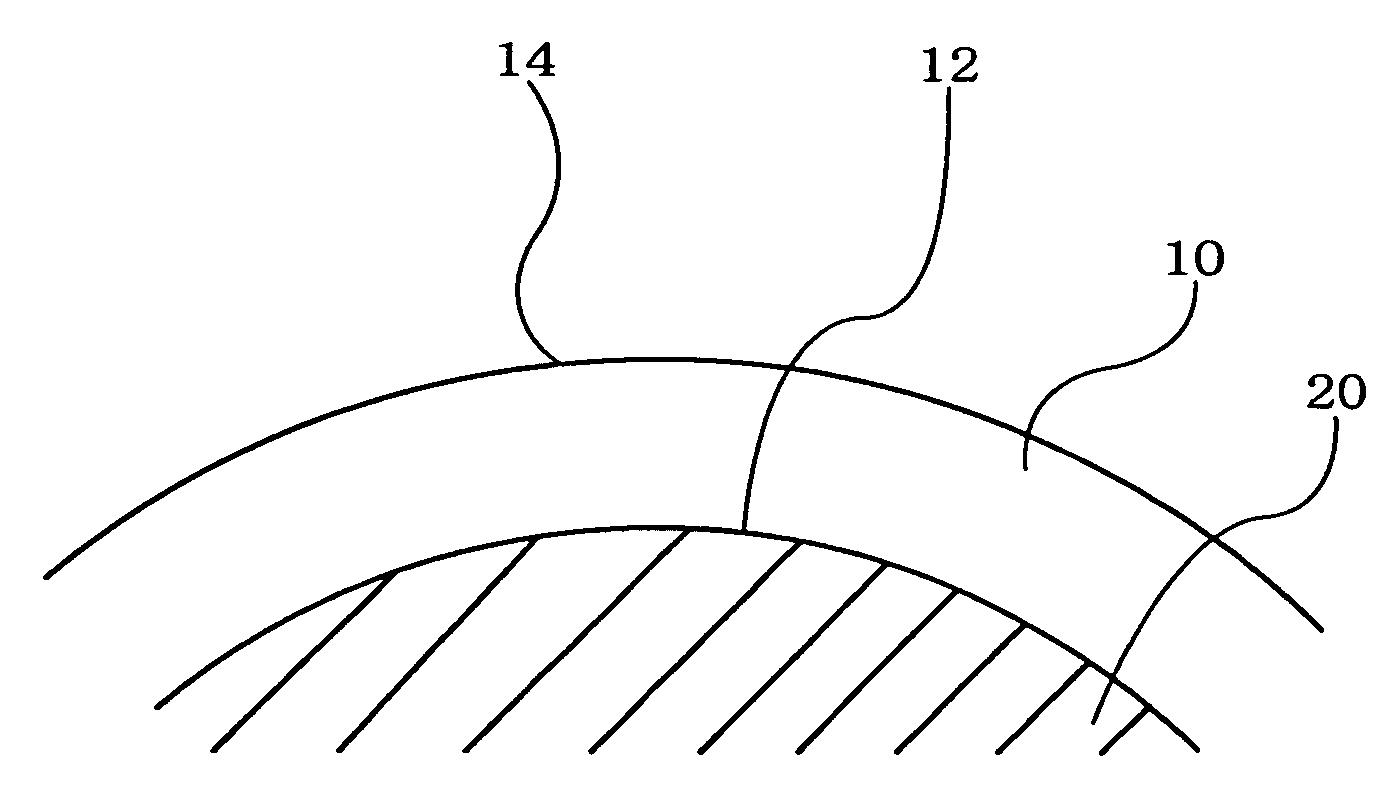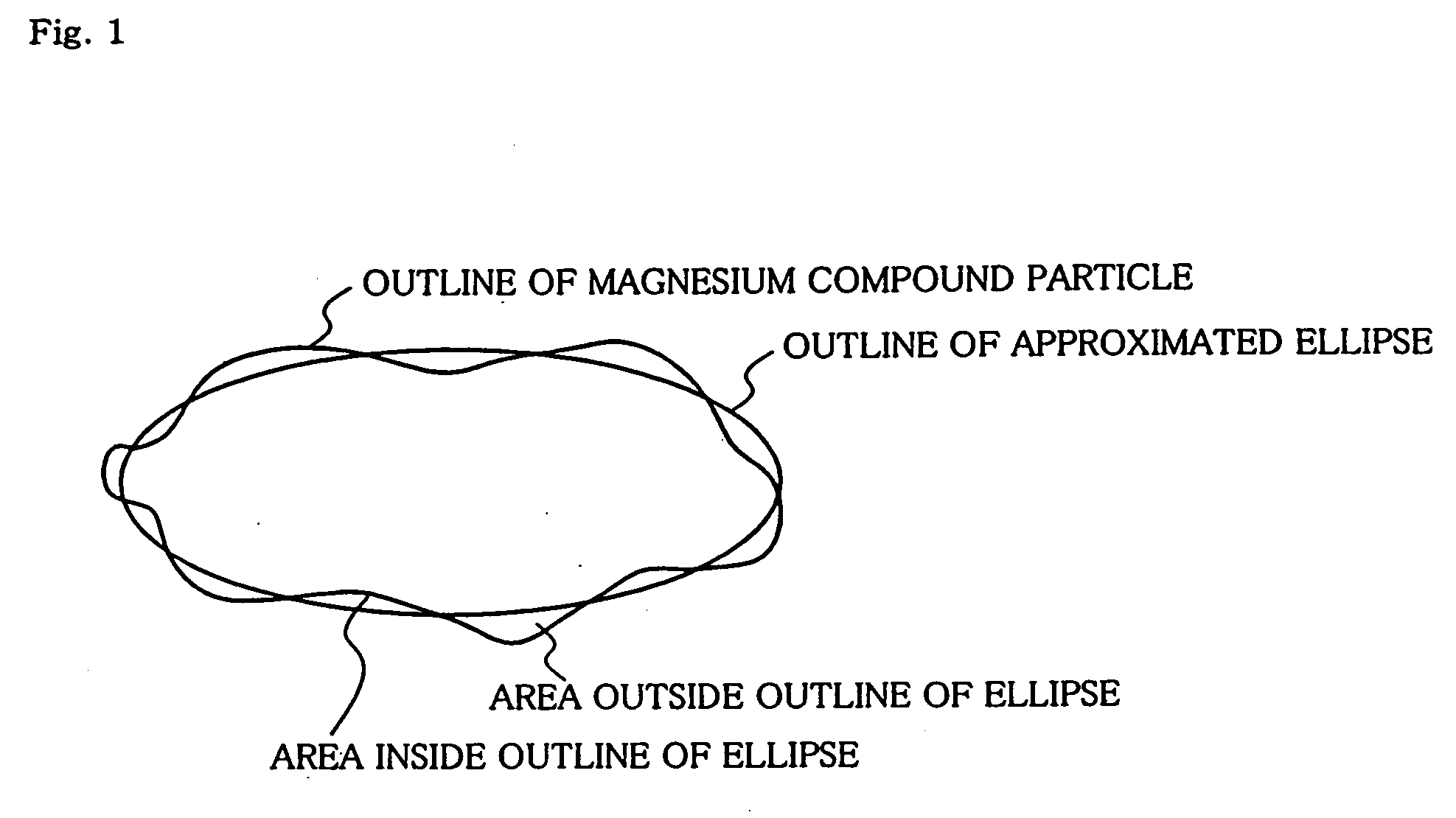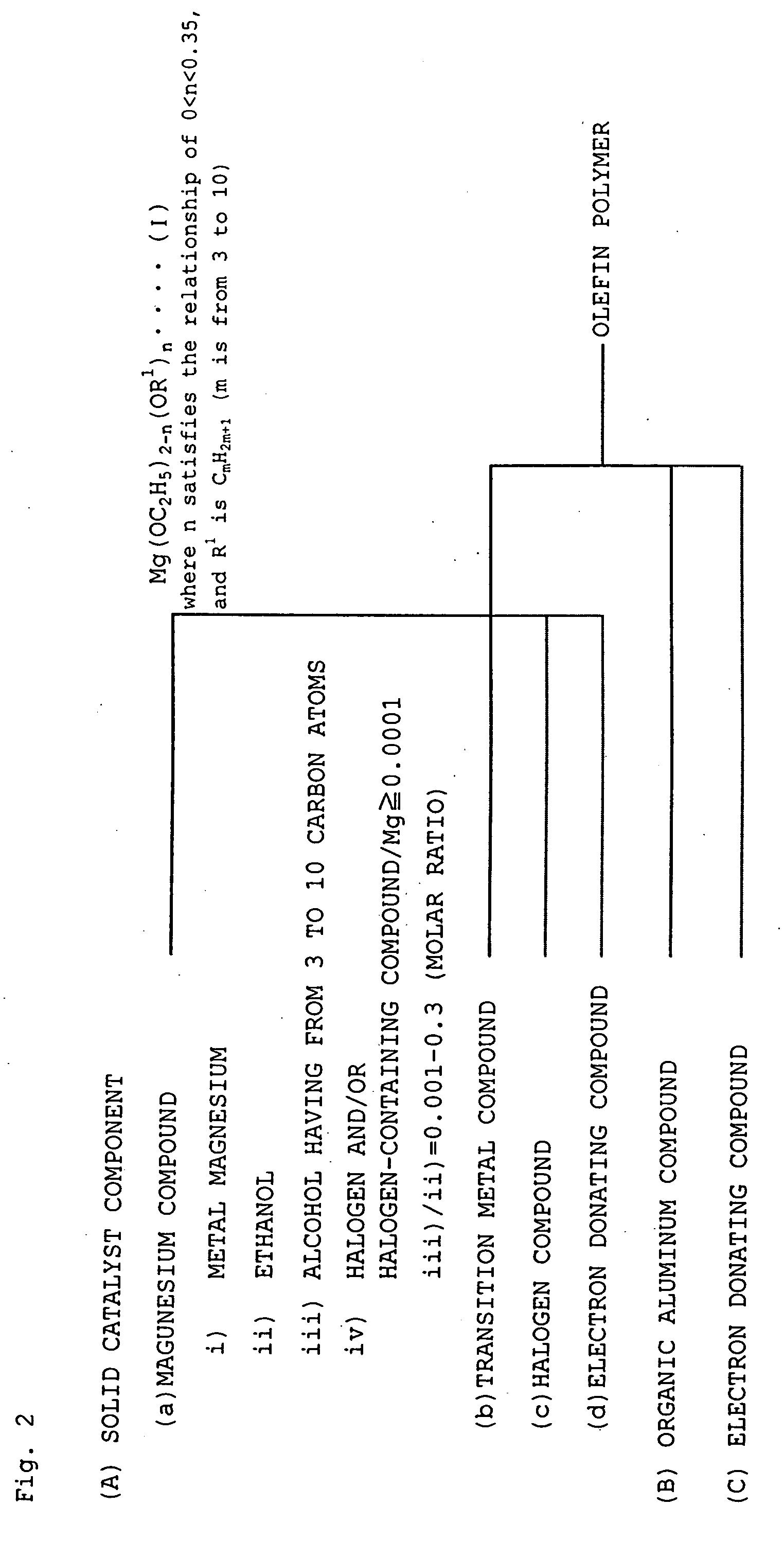Magnesium Compound, Catalyst for Olefin Polymerization and Method for Producing Olefin Polymer
a technology of olefin polymerization and magnesium compound, which is applied in the direction of catalyst activation/preparation, chemical/physical processes, group 2/12 element organic compounds, etc., can solve the problems of poor surface smoothness, poor stability of catalyst, and complicated methods, and achieve excellent powder flowability, less sticky components, and high activity
- Summary
- Abstract
- Description
- Claims
- Application Information
AI Technical Summary
Benefits of technology
Problems solved by technology
Method used
Image
Examples
example 1
(1) Preparation of Magnesium Compound
[0200]A three-necked flask having an internal volume of 0.5 liter and having a stirrer was flushed with nitrogen, and 225 ml (3.86 mol) of dehydrated ethanol (EtOH), 11.3 ml (0.12 mol) of n-butanol (BuOH), 1.20 g (9.5 milligram atom) of iodine and 12.0 g (0.49 milligram atom) of metal magnesium were poured into the three-necked flask and allowed to react at a reflux temperature (79° C.) with stirring (350 rpm) until no hydrogen was generated from the system, to give a magnesium compound.
(2) Preparation of Solid Catalyst Component
[0201]A three-necked flask having an internal volume of 0.5 liter and having a stirrer was flushed with nitrogen, and 16 g of the magnesium compound obtained in the above (1) and 80 ml of dehydrated octane were placed in the three-necked flask. The mixture was heated to 40° C., and 2.4 ml (23 mmol) of silicon tetrachloride was added. The mixture was stirred for 20 minutes, 3.4 ml (13 mmol) of di-n-butyl phthalate was adde...
example 2
(1) Preparation of Magnesium Compound
[0204]Example 1(1) was repeated except that the iodine was replaced with 0.45 g (9.5 milligram atom) of anhydrous magnesium chloride.
(2) Preparation of Solid Catalyst Component
[0205]Example 1(2) was repeated except that the magnesium compound prepared in the above (1) was used in place.
(3) Propylene Polymerization
[0206]Example 1(3) was repeated except that the solid catalyst component obtained in the above (2) was used in place. Table 1 shows the results.
example 3
(1) Example 1(1) was repeated except that the amount of iodine was changed to 0.72 g (5.7 milligram atom) and that the number of times of the stirring was changed to 525 rpm.
(2) Preparation of Solid Catalyst Component
[0207]Example 1(2) was repeated except that the magnesium compound prepared in the above (1) was used in place.
(3) Propylene Polymerization
[0208]Example 1(3) was repeated except that the solid catalyst component obtained in the above (2) was used in place. Table 1 shows the results.
PUM
| Property | Measurement | Unit |
|---|---|---|
| Percent by mass | aaaaa | aaaaa |
| Percent by mass | aaaaa | aaaaa |
| Percent by mass | aaaaa | aaaaa |
Abstract
Description
Claims
Application Information
 Login to View More
Login to View More - R&D
- Intellectual Property
- Life Sciences
- Materials
- Tech Scout
- Unparalleled Data Quality
- Higher Quality Content
- 60% Fewer Hallucinations
Browse by: Latest US Patents, China's latest patents, Technical Efficacy Thesaurus, Application Domain, Technology Topic, Popular Technical Reports.
© 2025 PatSnap. All rights reserved.Legal|Privacy policy|Modern Slavery Act Transparency Statement|Sitemap|About US| Contact US: help@patsnap.com



